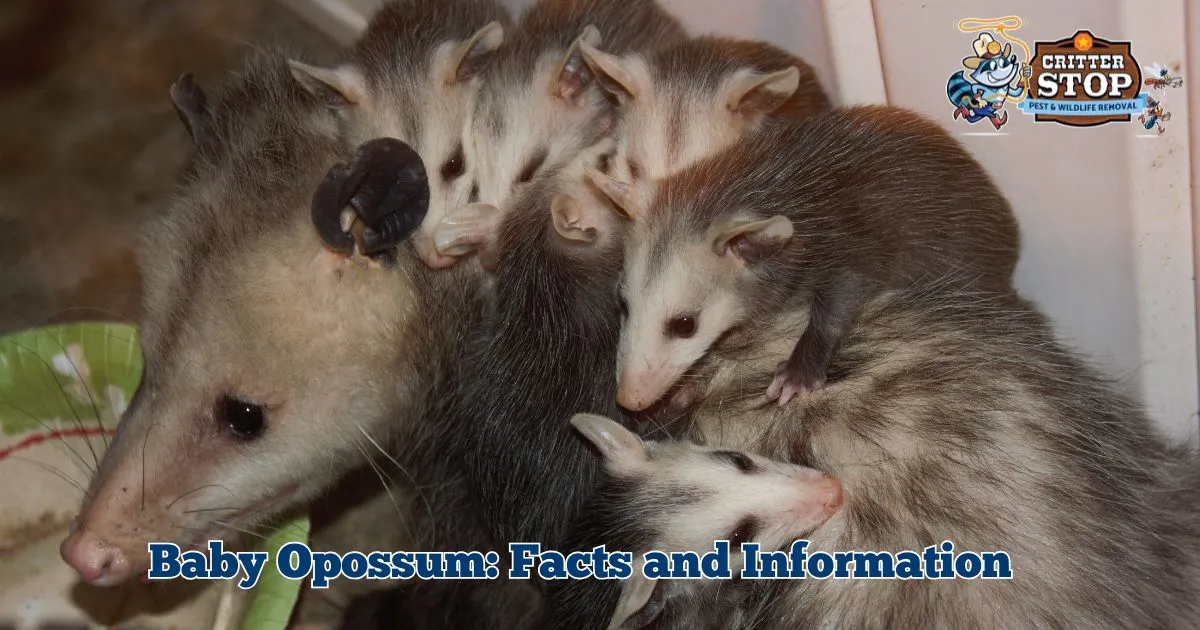
Baby possums, also known as joeys, are often misunderstood. While they may not be the cutest animals on the block, they play an important role in the ecosystem. Now, we’ll explore the world of baby opossums and shed light on some misconceptions surrounding them.
Many people are unaware of the fact that baby opossums are born extremely underdeveloped. They are about the size of a honeybee and are blind, hairless, and deaf. At this stage, they are completely dependent on their mother for survival.
Joeys crawl into their mother's pouch and grab one of her teats, where they remain for the next 2-3 months. During these months, they grow fast as they develop their senses. Once they have developed, they leave the pouch and ride on their mother's back for several weeks before venturing alone.
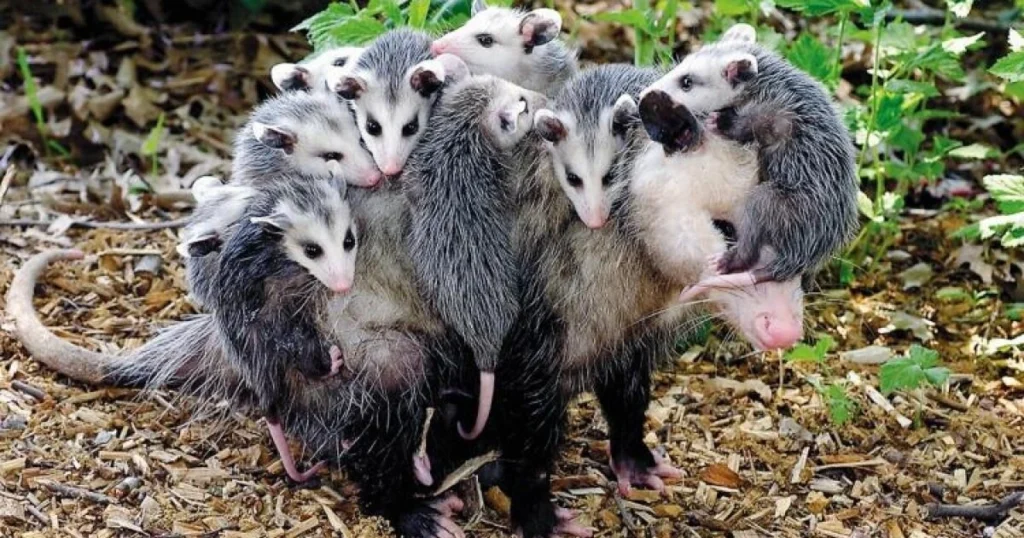
Opossums, or possums, are a group of marsupials found in North and South America. They can play dead when threatened, but there is much more to these creatures than their defense mechanism. In this section, we are exploring the different stages of opossum development.
Newborn opossums are tiny, blind, and hairless. They are about jellybean size and weigh less than a gram. At this stage, they are completely dependent on their mother for survival. They spend their time in their mother's pouch, where they nurse and develop.
When joeys are a week old, they will have grown to about the size of a grape. They will have doubled in size at two weeks and begin opening their eyes. At the end of their first month, they will have grown to about the size of a small mouse and fully furred. They will also venture out of their mother's pouch and explore their surroundings.
Opossums are considered juveniles at two to three months old. They are still dependent on their mother but more independent than they were in their first month. They are also more active and will spend more time outside of their mother's pouch.
At this stage, they will have grown to about the size of a rat and weigh between 50 and 100 grams. They will continue to grow rapidly and will develop their distinctive prehensile tail, which they use to hold onto branches and other objects.
By the time opossums are four to five months old, they are considered sub-adults. They are almost fully grown and are much more independent than they were in their earlier stages. They will occasionally nurse from their mother, but they can find their food and water.
At this stage, opossums will have grown to about the size of a small cat and weigh between 500 and 700 grams. They will have developed their adult fur and a fully formed prehensile tail. They will also have developed their unique defense mechanism of playing dead when threatened.
Overall, opossums go through several stages of development before reaching adulthood. Understanding each stage can help us appreciate these fascinating creatures.
Opossum Age Size Chart
| Age (Months) | Weight (grams) | Size |
| Newborn | <1 | Jellybean |
| 1 month | ~10 | Small mouse |
| 2-3 months | 50-100 | Rat-like |
| 4-5 months | 500-700 | Small cat |
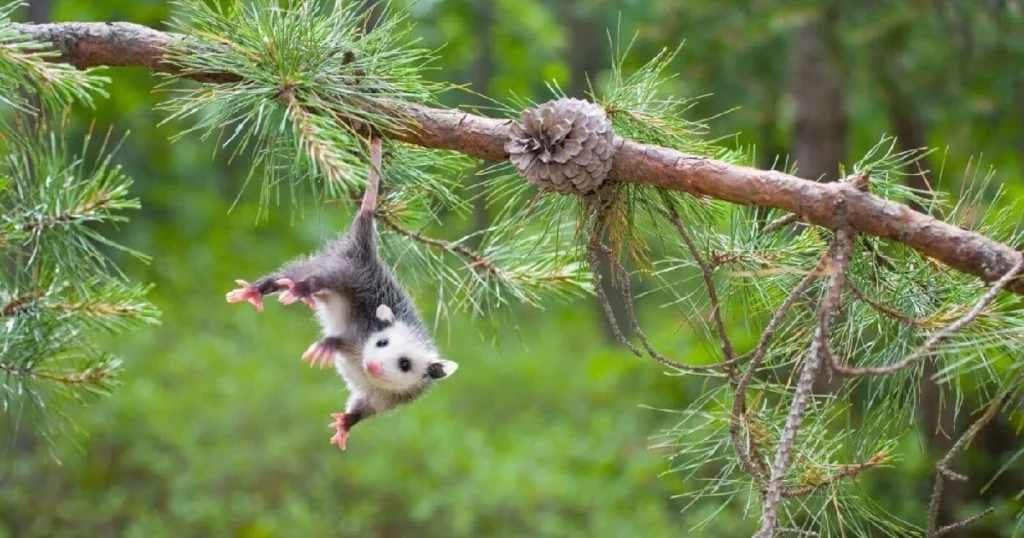
Baby opossums, or joeys, are adorable in many parts of North America. Identifying them can be challenging, but there are a few key physical characteristics and behavioral traits to look out for.
Baby opossums are very small and fragile, weighing only a few grams at birth. They have long, pointed snouts and hairless ears. Their fur is soft and gray, with a white underbelly. They also have a distinctive prehensile tail that they use to grasp onto branches and other objects.
One unique feature of baby opossums is their ability to "play dead" when threatened. They will lie on their backs, with their mouths open and tongues hanging out, and emit a foul-smelling odor. This behavior is a defensive move that helps them avoid predators.
Baby opossums are nocturnal creatures, which means they are most active at night. However, seeing them out during the day is common, especially if they are hungry or thirsty. They also make various sounds, including hissing, growling, and clicking.
Despite their cute and cuddly appearance, baby opossums are wild animals and should not be approached or handled. You must contact a licensed wildlife rehabilitator for assistance if you encounter one in distress.
In conclusion, identifying baby opossums can be challenging. Still, with a little knowledge of their physical characteristics and behavioral traits, it is possible to spot these adorable creatures in the wild. Remember always to respect their space and seek professional help if needed.
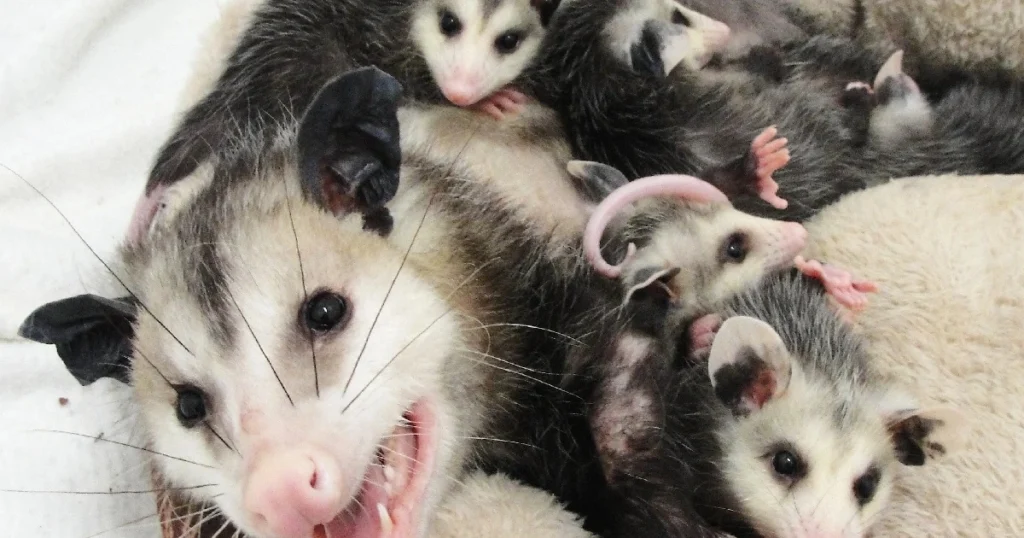
Opossums are solitary animals and only come together during the mating season, typically between January and July. During this period, males search for a mate and compete with other males to mate with a female. The mating occurs when the male approaches the female and attempts to mount her. If successful, copulation will occur, and the male will leave shortly after.
After mating, the female opossum carries her young for approximately 12-13 days before giving birth. After this, the fertilized eggs develop into tiny embryos, and the female's body forms a pouch where the young develop further.
When it is time to give birth, the female opossum will typically find a quiet, secluded area to do so. Opossums are marsupials, meaning their young are born underdeveloped and will continue to develop in the mother's pouch. A typical litter size for opossums is between 5-13 young, although larger litters have been known to occur.
Overall, the opossum reproductive process is relatively short, with a gestation period of just over a week and a relatively large litter size. While the process may seem simple, it is important to note that opossums have unique reproductive systems that allow them to thrive in their natural habitats.

If you find an orphaned opossum, you must provide immediate care to increase its chances of survival. Follow these steps:
First, it is important to keep the opossum warm by providing a heating pad or hot water bottle wrapped in a towel. Do not offer food or water until it has warmed to a normal body temperature of around 95°F.
Check the opossum for any injuries or signs of illness. If it is injured, seek medical attention from a licensed wildlife rehabilitator.
Opossums have a unique diet that consists of both meat and vegetables. A commercial milk replacer specifically formulated for opossums can be used for orphaned opossums. You should follow the manufacturer's instructions for mixing and feeding.
At around 8 weeks old, opossums can start to eat solid food such as fruits, vegetables, and meat. Make sure to offer varied foods to ensure they receive a balanced diet.
Opossums need a safe and secure habitat to grow and develop. A big plastic container with a lid or a wire cage can be used as a temporary home. Provide a nesting box filled with soft bedding material for the opossum.
Remember to keep the habitat clean by removing soiled bedding and feces. Provide fresh water and food daily, and ensure the opossum can access a hiding place or shelter.
By following these steps, you can properly care for an orphaned opossum and increase its chances of survival. If you are unsure how to care for a baby opossum, seek assistance from a licensed wildlife rehabilitator.
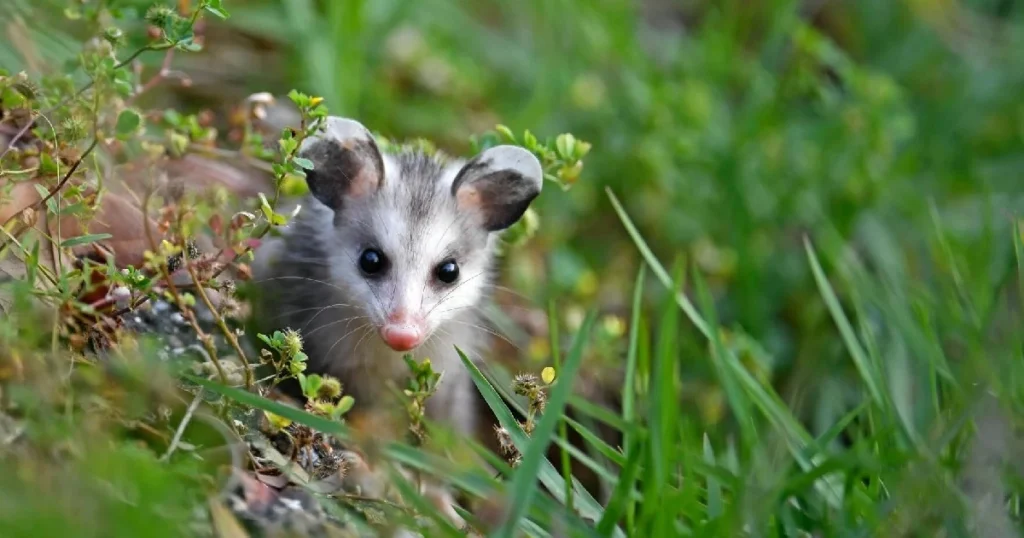
Monitoring the growth of a baby opossum is crucial to ensure it is developing properly. Baby opossums grow rapidly and can double their weight within a week. Their growth rate is dependent on factors such as nutrition, genetics, and environmental conditions.
A growth chart for baby opossums can be used to track their growth and development. The chart typically includes measurements of weight, length, and head circumference. It should be used as a guide to monitor the baby opossum's growth and identify any potential issues.
When interpreting a growth chart, it is important to consider the age of the baby opossum. Baby opossums grow at different rates depending on their age. For example, a baby opossum two weeks old may weigh between 50-100 grams, while a baby opossum four weeks old may weigh between 150-250 grams.
The health of a baby opossum must be monitored closely. Baby opossums are susceptible to a range of health issues, including parasites, infections, and injuries.
One common health issue in baby opossums is dehydration. Dehydration can occur if the baby opossum is not receiving enough fluids or is experiencing diarrhea. Lethargy, dry mouth, and sunken eyes are signs of dehydration.
Another common health issue in baby opossums is hypothermia. Baby opossums cannot regulate their body temperature, and they can quickly become cold. Signs of hypothermia include shivering, lethargy, and a low body temperature.
If you notice any signs of health issues in a baby opossum, it is important to seek veterinary care immediately. Prompt attention can prevent further complications and ensure that the baby opossum grows up healthy and strong.
Using a growth chart and monitoring the health of a baby opossum are important steps in ensuring that it develops properly. By closely monitoring its growth and health, you can help give the baby opossum the best chance for a healthy and happy life.
Establishing a consistent feeding schedule is important when feeding baby opossums. Baby opossums require frequent feedings, usually every 2-3 hours, until they are around 12 weeks old. After that, they can be fed every 4-5 hours. It’s important to remember they should not be fed at night, as they are nocturnal animals and must establish a proper sleep schedule.
Baby opossums have specific dietary needs that must be met to grow and develop properly. Their diet should include fruits, vegetables, and protein sources. Some appropriate foods for baby opossums include:
It is important to avoid feeding baby opossums any foods high in fat, sugar, or salt. They should not be fed any dairy products besides yogurt or cottage cheese.
When feeding baby opossums, it is important to monitor their weight and adjust their feeding schedule and portion sizes. Once they reach maturity, a baby opossum's diet should be gradually transitioned to adult food.
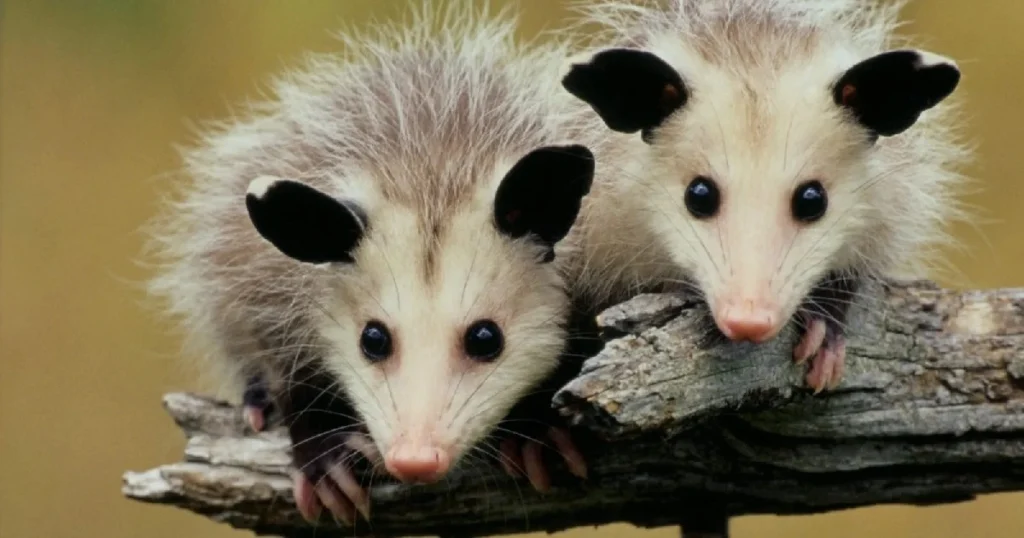
Opossums are known for their unique behavior, which includes playing dead when threatened. However, this is not the only behavior that separates them from other animals. Opossums are nocturnal creatures, which means they are active at night and sleep during the day. However, seeing a baby opossum out during the day is common, especially if it is hungry or lost.
At around 2 months old, baby opossums explore their surroundings and become more independent. They are curious creatures and will often investigate new objects and scents. However, they are also cautious and will retreat if they feel threatened.
Opossums are solitary animals and do not form social bonds with other opossums. However, they can be socialized with humans and other animals if introduced at a young age. Baby opossums are particularly receptive to socialization and can become quite friendly with their human caretakers.
It is important to note that opossums can carry diseases, so it’s necessary to take precautions when handling them. They also have sharp teeth and claws, so it can be risky to handle them if not done properly.
In conclusion, opossum behavior is unique and fascinating. While they may not form social bonds with other opossums, they can be socialized with humans and other animals if introduced at a young age. It’s important to take precautions and prevent the spread of diseases.
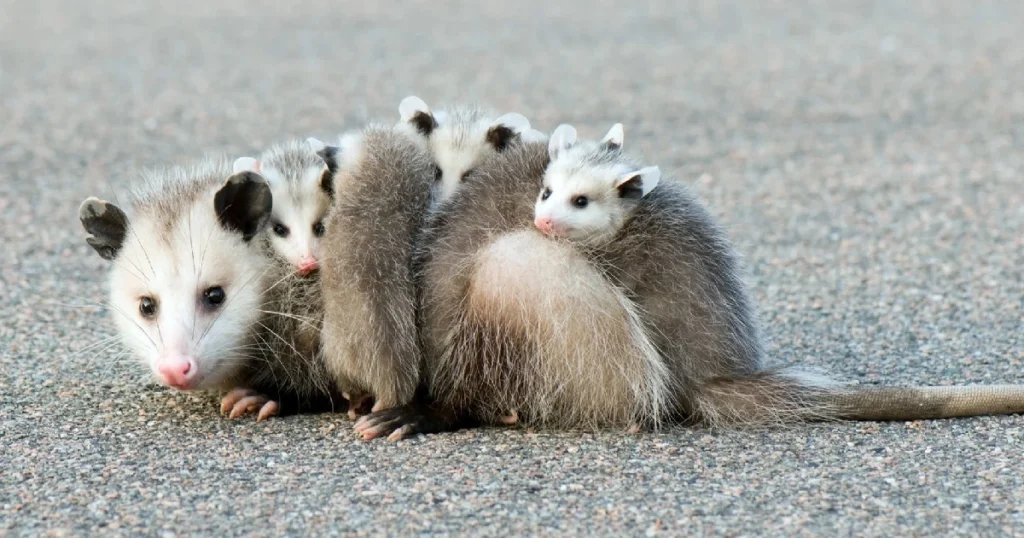
When a baby opossum is injured or orphaned, it is important to take them to a licensed wildlife rehabilitator. These professionals are trained to care for orphaned and injured animals. The rehabilitation process for baby possums involves a few key steps.
First, the rehabilitator will assess the opossum's condition and provide any necessary medical treatment. This may include administering medication, cleaning wounds, or providing fluids.
Once the opossum is stable, the rehabilitator will provide a suitable environment for the animal to recover. This can involve providing warm, quiet spaces and appropriate food and water.
As the opossum recovers, the rehabilitator will gradually introduce them to a more natural environment. This may involve providing climbing structures, hiding places, and opportunities for the opossum to practice foraging and other natural behaviors.
When the opossum is fully recovered and able to survive in the wild, the rehabilitator will release them back into their natural habitat. This process involves carefully selecting a suitable release site, such as an appropriate food and shelter area.
Before release, the rehabilitator will also ensure that the opossum can find food and water independently and avoid potential predators.
Releasing a rehabilitated opossum into the wild is a rewarding experience for both the rehabilitator and the animal. It gives the opossum a second chance at life in the wild and helps maintain healthy populations of these important native animals.
As with wild animals, it is important to research and understand the permits and regulations required to care for a baby possum. In most cases, keeping a wild animal as a pet is illegal without the proper permits. These permits differ depending on the state or country in which you reside. Note that even with the proper permits, caring for a baby opossum can be a difficult and time-consuming task.
When caring for a baby opossum, you must consider their well-being and provide ethical care practices. This means offering a suitable environment, proper nutrition, and seeking veterinary care when necessary. It is important to note that baby possums are wild animals and not meant to be pets. You should also avoid keeping them captive for an extended period and release them back into the wild so they can survive independently.
Overall, caring for a baby opossum requires a great deal of knowledge and understanding of the legal and ethical considerations involved. It is important to seek guidance from professionals in the field and to always prioritize the well-being of the animal.

There are several species of opossums, but the most common one is the Virginia opossum. This species is found throughout North America and is known for its distinctive appearance. Virginia opossums have grayish-white fur, a long pointed snout, and a hairless prehensile tail to grasp onto branches and other objects.
Another common species of opossum is the common brushtail possum, which is native to Australia. This species is larger than the Virginia opossum and has a bushy tail covered in fur. They are also known for their ability to climb trees and preference for living in urban areas.
Short-tailed opossums are becoming increasingly popular as pets due to their small size and unique appearance. These opossums are native to South America and are known for their short, hairless tails. They are also active and curious, making them fun pets to watch.
When caring for a short-tailed opossum, providing them with a cage large enough to move around in is important. They also require a diet high in protein, which can be achieved by feeding them a combination of insects and commercial opossum food.
Overall, opossums are fascinating creatures with many species and unique characteristics. By understanding their needs and behaviors, we can give them the care and attention they need to thrive.
If you are having issues with opossums on your property, you need a quick and humane solution. Critter Stop is a professional wildlife removal company that can help you relocate opossums. They offer a free inspection to assess the situation and provide a customized solution.
Critter Stop has a fantastic reputation, and customer reviews online because it provides high-quality work and great customer service. They use humane techniques to remove opossums from your property and relocate them to a safe and suitable habitat.
Baby opossums are often found in attics, crawl spaces, and other enclosed areas. Critter Stop's team of experts can safely remove newborn opossums and their mothers from your property and relocate them to a safe location. They use specialized equipment and techniques to ensure that the opossums are removed without harm.
If you have a problem with opossums on your property, don't hesitate to call Critter Stop at (214) 234-2616 for a free inspection. They will provide you with a quick and humane solution to your opossum problem.
A baby opossum is commonly referred to as a joey.
At 5 months old, an opossum typically weighs around 2-3 pounds and is approximately 12-14 inches in length.
Opossums have a short gestation period of only 12-13 days.
The age of a baby possum can be estimated by its size and physical development. A veterinarian or wildlife rehabilitator can also provide a more accurate estimation.
An opossum size chart can be useful in determining the approximate age and weight of a baby opossum.
If you find an orphaned baby opossum, it is important to seek the help of a licensed wildlife rehabilitator. They can provide proper care and nutrition for the baby until it is old enough to be released back into the wild.
A baby opossum in care should be fed a specialized formula available from wildlife rehabilitators or pet stores.
Baby opossums make various noises, including hissing, growling, and clicking sounds.
Proper care for an orphaned baby opossum includes providing warmth, hydration, and specialized formula. It is important to seek the help of a licensed wildlife rehabilitator for proper care.
Newborn opossums are tiny, weighing only a few grams and measuring approximately 1 inch in length.
If you find a baby opossum alone, do not attempt to care for it yourself. Contact a licensed wildlife rehabilitator for assistance in providing proper care.
Visit our Critter Library and learn more about our furry friends